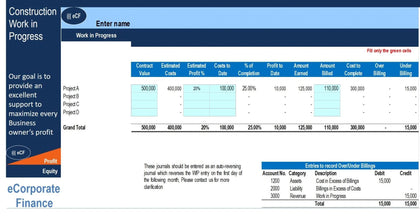Cloud kitchens, also known as ghost kitchens or virtual kitchens, refer to delivery-only kitchens. This Cloud Kitchen business Plan Model is a perfect tool for a financial feasibility study on launching a food joint. The model can be used by start-ups to create 5 years projections along with the construction/setup phase.
The Model can be used for creating a business plan for any size of business by using a combination of revenue from:
- Main Couse
- Beverage
- Starter
- Catering Revenue
- Other revenue (merchandise, ingredients, etc.)
Also, you can incorporate 3 scenarios into the model which can be updated with a click of a button to understand the impact of the ever-evolving business environment on business returns.
The Model includes assumptions related to:
- Construction/Setup Cost
- Revenue source includes main Food Items, Beverage Sale, Snack Sale, Catering Revenue, and other sources. You can keep revenue assumptions from all the mentioned sources or can pick and choose the option which is the best fit for the business.
- Raw material cost (Variable O&M) for each segment can be assumed on a % of revenue basis. Also, you can assume Other Fixed Annual Costs like rent, management salary, warehouse rent, security cost, insurance, etc. (Up to 11 different cost heads).
- Third-party Platform Fee (This is the share in revenue paid to the third-party platform like Zomato, Uber Eat, etc. for sales realized through their platforms)
- Flexible Funding Profile – Cash equity, Bank Debt, and Bank overdraft
- Working Capital Assumptions related to accounts receivables, inventory, and payables
- Straight Line Depreciation with the option to renew assets at the end of their useful economic life.
- Annuity and Even Principal Repayment options
- Inflation and Indexation
- VAT during the construction and operations phase
- Tax Assumptions including Tax holiday period
Model Output includes:
- Project IRR & NPV (via DCF Valuation)
- Equity IRR & NPV (via DCF Valuation)
- Relative valuation
- Football Field Analysis
- Equity Payback Period
- Cash Waterfall
- Debt Service Profile
- Integrated Financial Statements
- Fully Integrated Dashboard
- Break Even Analysis
Why Fin-wiser’s Financial Model Template:
- Our model is built on the monthly timeline which provides more detailed data for the Analysis
- The model is divided into two phases i.e. Development and Operations
- All revenue and cost assumptions can be input into 3 scenarios. This helps users to assess the impact of multiple business scenarios in one model. This can be operated simply with a click of a button.
- The debt repayment has been profiled with 2 scenarios i.e. Annuity payment and Even Principal Payment repayment. You can change the scenario with a click of a button and assess the impact on IRR.
- The model is built with Financial Modeling Best Practice and has clearly defined input, calculations, output cells, and tabs to help even a rookie excel user operate the model efficiently.
- Our Models are thoroughly reviewed, and Quality checked for Arithmetic and Logical flow
Technical Specifications:
- The model doesn’t use Macros(VBA) and hence the impact of change in any assumption can be directly seen on the return.
- The model is built using Microsoft Excel 2019 version for Windows. Please note, on certain Mac laptops or MS Excel prior to 2007, Excel with Macros can slow down your computer if your PC does not have enough processing power.
- We advise you not to delete or insert rows and columns into the model if you are not aware of the model structure as it can distort model functioning. If you need assistance with customizing the model template, the author is more than willing to help you. Simply contact us and send your model template as well as specifications. We will then get back to you with a quotation for the customized service (billable hours & completion date).
- The model uses Cell Styles



























